Site Prep – The Truckee Workshop Garage Part 4
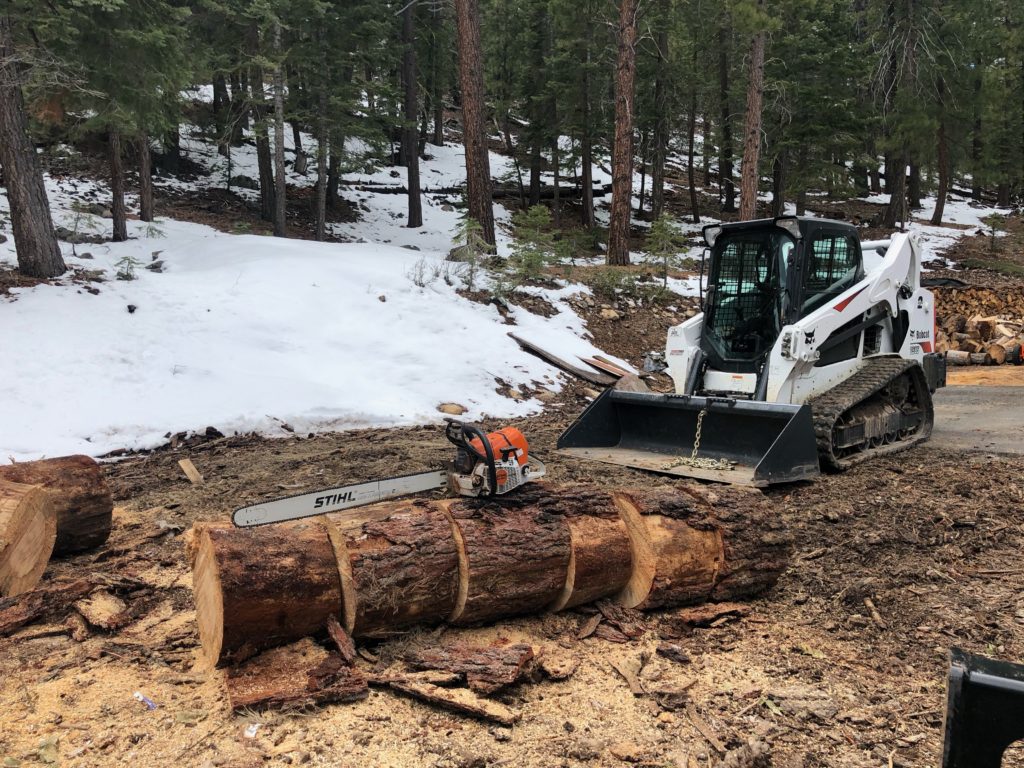
At this point I was waiting for my permit application to be reviewed, but I could start doing some general site preparation. The site had a huge pile of construction wood from when the house was built some 12 years ago. It was wood that might have been useful at some pint but was slowly decaying into the earth. Behind that was a big pile of rotting old logs combined with tree trimmings, a big stump, and leaves. It all had to be moved, as I wanted the garage right in that spot.
If you are just jumping into this blog series, then check out my the previous post where I talked about who does what for a new building construction project.
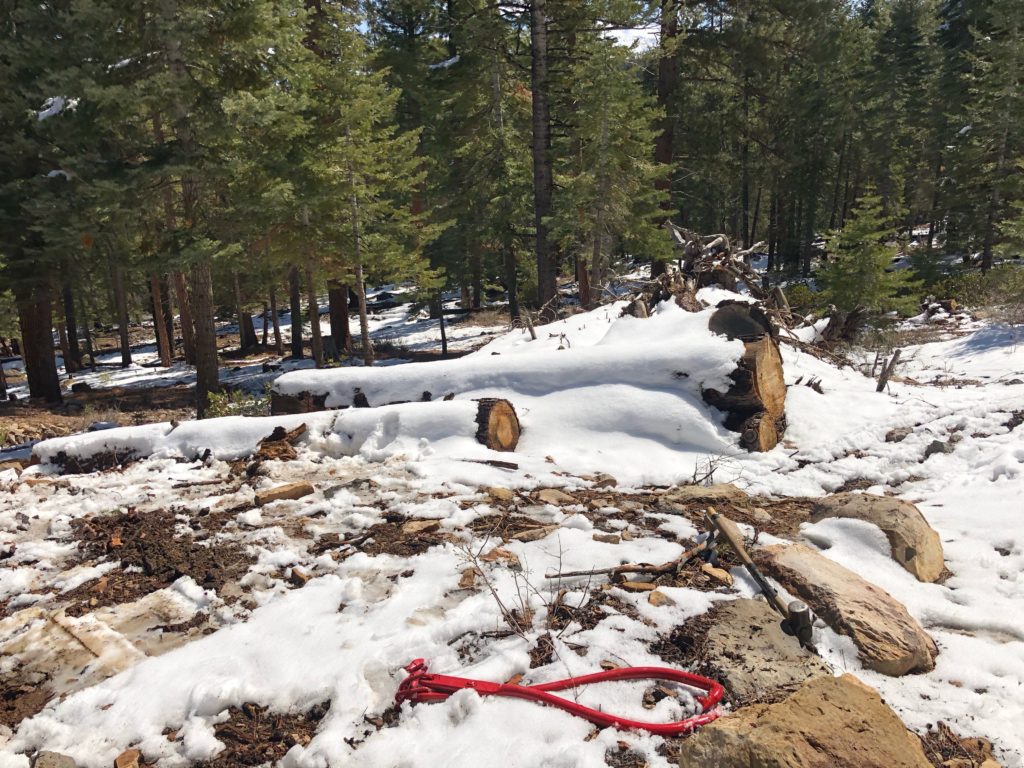
I decided to get a Bobcat T595 compact track loader, also known as a tracked skid steer. Originally I wanted to get a Kubota tractor, but I later realized they weren’t ideal for traversing non-level terrain. Our property is pretty large, and not very level. Tractors have a hard time going sideways on un-level land, and can be prone to tipping. A tracked skid steer could do a better job of getting around, and it would be fairly versatile with various attachments. I could go into a long discussion on why I picked what I did, but I’ll save that for another time.
I bought a length of chain and some Skidding Swivel Tongs [Amazon affiliate link]. The tongs are great for gripping a tree and dragging it around. It isn’t absolutely necessary, as a chain can usually be wrapped around the tree, and I’m not sure I really like using the tongs. They tend to pop off, forcing me to go back and re-set them. Later on I eventually got a grapple attachment, but even with the grapple I would find that dragging was more effective. Sometimes a tree would be too heavy to lift with the grapple, but more often the tree was simply too long to be carried perpendicular to the direction of travel. Just too many trees that I couldn’t get around with a 12-15′ tree between the Bobcat’s teeth.
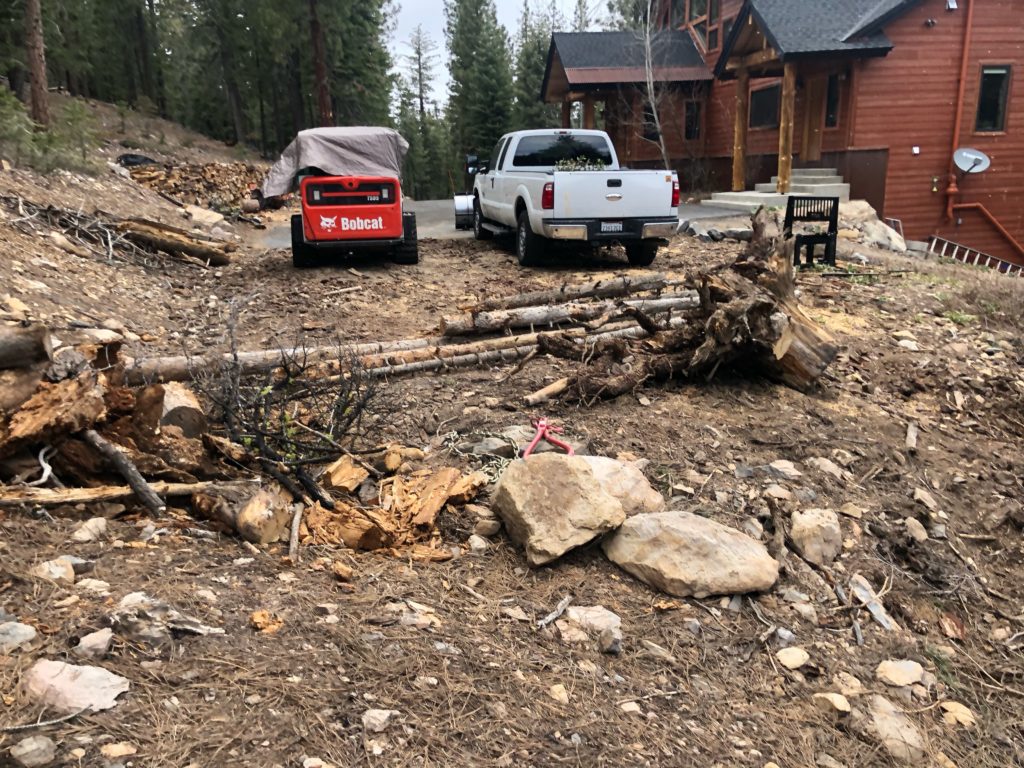
Clearing all the downed wood took quite a while. I moved a lot of the smaller pieces into piles for chipping, and cut up the larger pieces of wood to burn in the fireplace. I also removed a lot of dead wood that was behind the future garage area; it has to be fire safe.
Once the pile was gone I could concentrate on tree removal. About four or five trees where listed on my site plan for removal. The county doesn’t regulate this type of tree removal, so I could do it before my permit was approved. The Town of Truckee, which we are outside of, does have more strict rules about trees that can be cut down, especially if they are larger than a certain diameter. Nevada County also has some laws about heritage trees, but none of that applied to what I wanted to do.
One of the problems with cutting down a big tree is the possibility of it hitting something important, like our house. I had to estimate the height of the trees, and it was pretty easy to do. I simply walked back from the tree a specific measured distance, such as about 50′. I then held the iPhone to my eye and sighted the top of the tree along the phone. An app on the phone measured the angle. I did some basic trigonometry and added in the height to my eye. This gave me a pretty close estimate; I was within a few feet on some of the taller ~60′ trees!
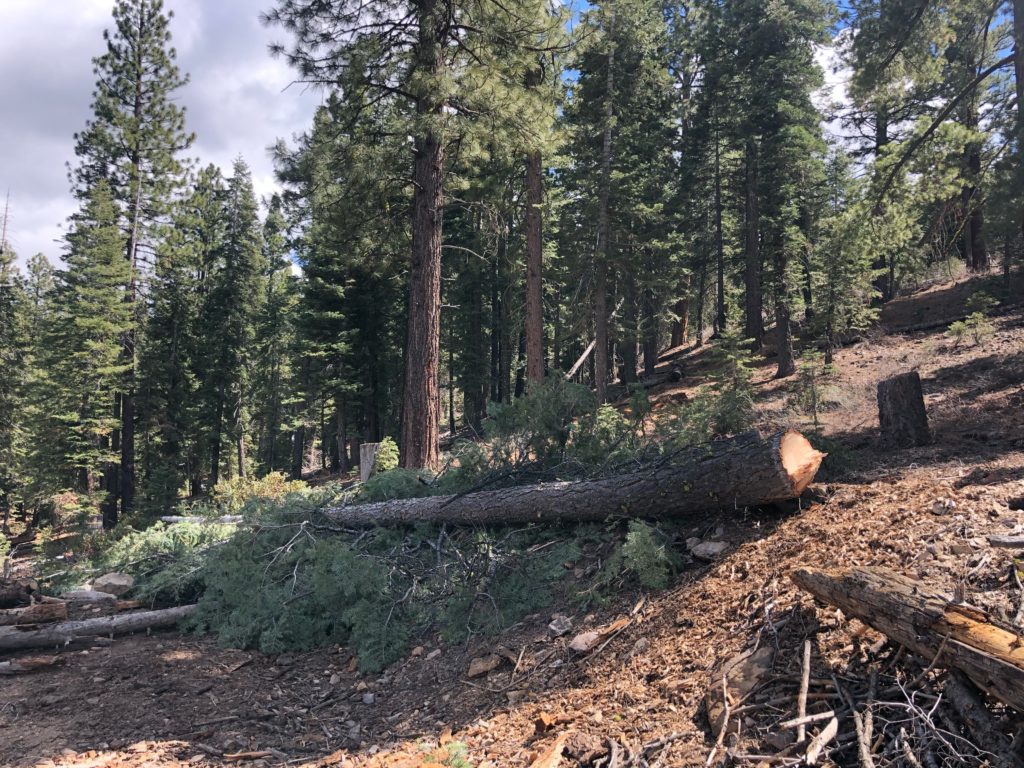
Cutting down a tree with a 29″ diameter was a bit scary. I hadn’t done anything that large before. Luckily there are a lot of great tutorial videos on YouTube on how to properly cut down trees. My technique improved a ton after practicing a bit on smaller trees, and none of the big trees hit anything important.
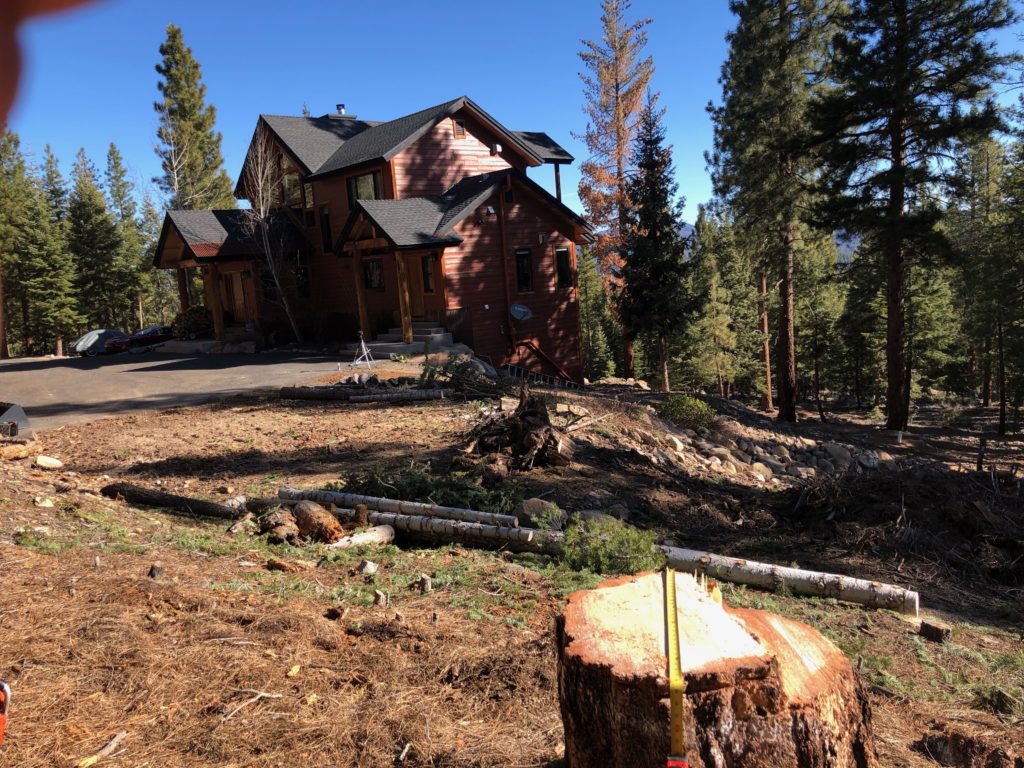
I was pretty happy with most the trees I dropped. They landed pretty close to where I was expecting them to, and the stump looked “good”. A bad looking stump has a high back, sort of like a barber chair, and is caused by the tree splitting higher than expecting and violently falling down. “Barber chairing” is extremely dangerous, and I took a lot of care when cutting down the trees.
I stripped the limbs from the trees and stored the large logs for later processing. This is when the Bobcat and grapple came in really handy. I could move trees 12′ or less with relative ease, and longer lengths I could move with some careful planning to avoid hitting trees. I’m hoping to make a timber frame greenhouse from these, so I removed the bark and sealed the ends to allow them to season without getting bugs in them. I’ll find out next year if that worked, but I can already tell that the wood has a lot of cracks from excessively fast drying. The humidity in Truckee is very low, which is great for quickly drying wood wood, but you don’t want to do it too fast and have a lot of cracks.
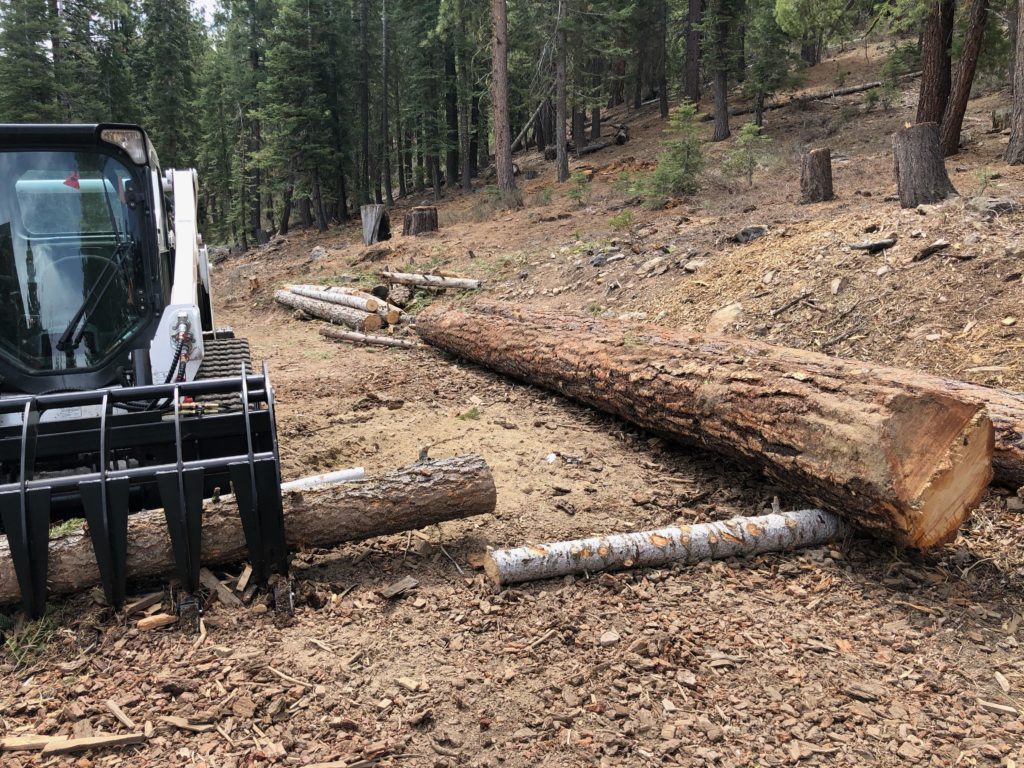
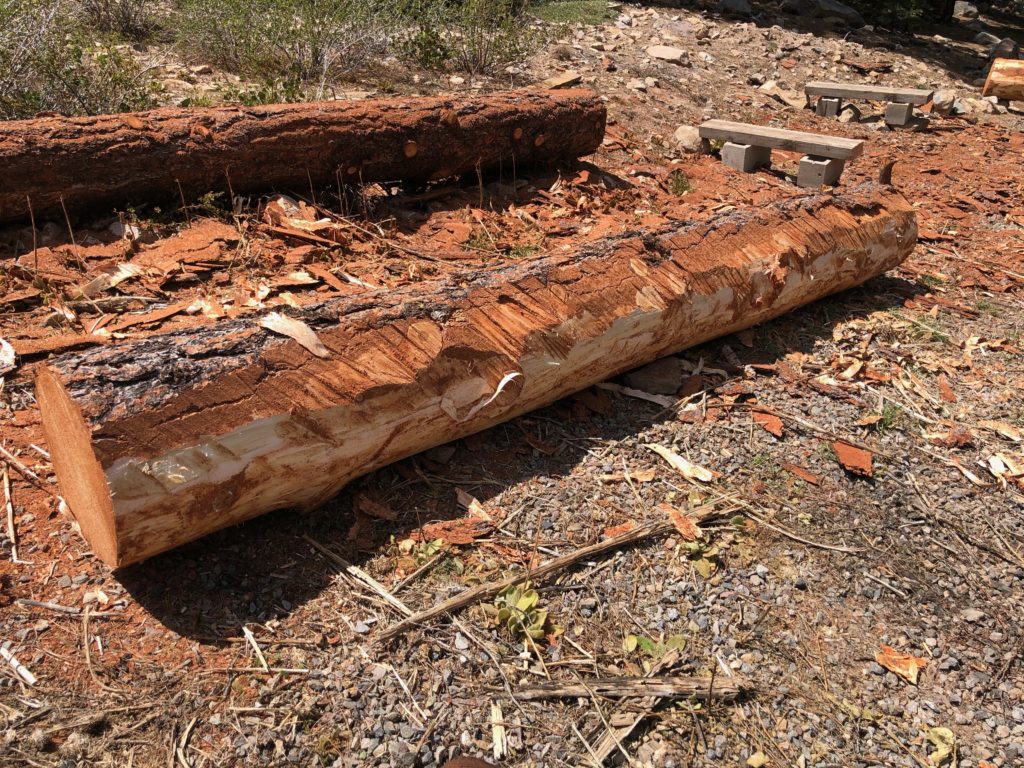
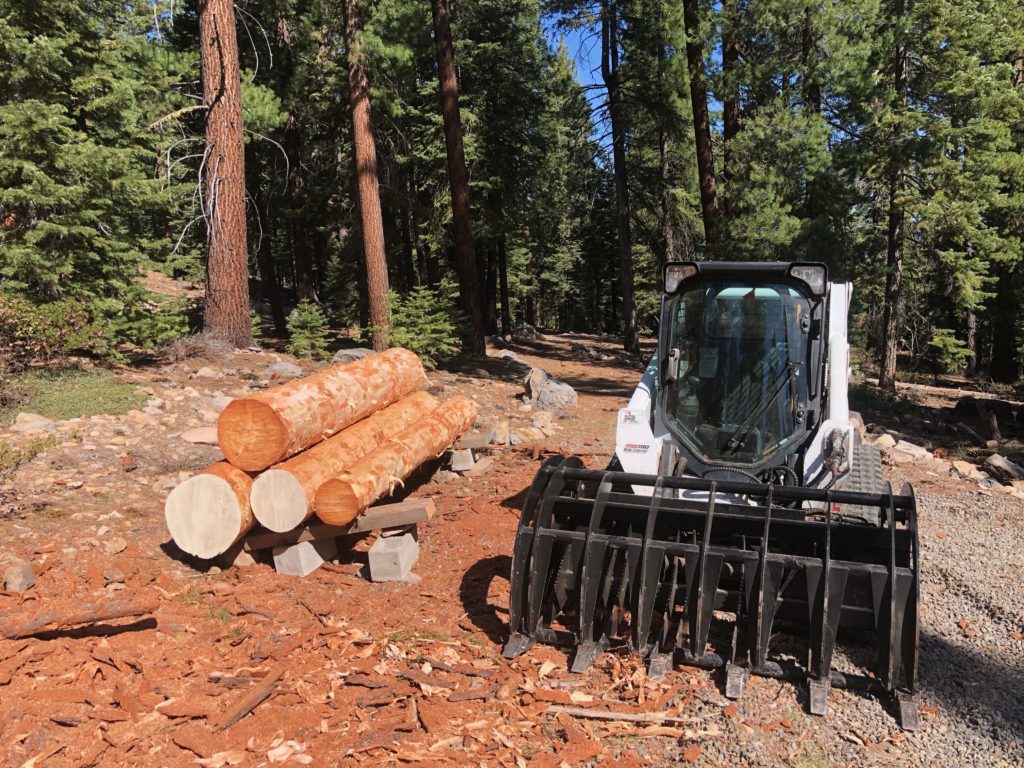
In the next post I discuss some of the earthwork. Jump over to part 5, excavation for a workshop.
Browse the entire series on my Truckee Workshop 2021 Project.



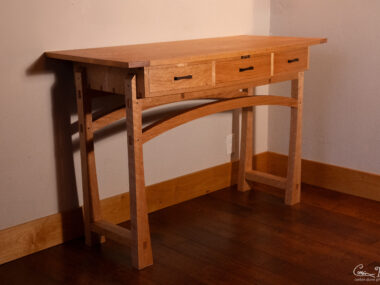

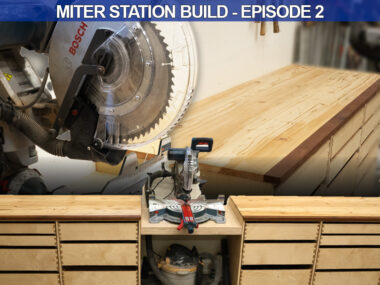
[…] In the next post I’ll started doing some site prep: Part 4 – Truckee Workshop Build Site Prep. […]
[…] you are just jumping in to my blog posts, check out the previous one on site prep or the entire post series: Workshop Project […]